Celestron SkyMaster 25x100 vs Canon 18x50 IS AW: which stargazing binoculars are right for you?
Are you after a pair of binoculars for astronomy, stargazing and the night sky? We compare two titans of the genre

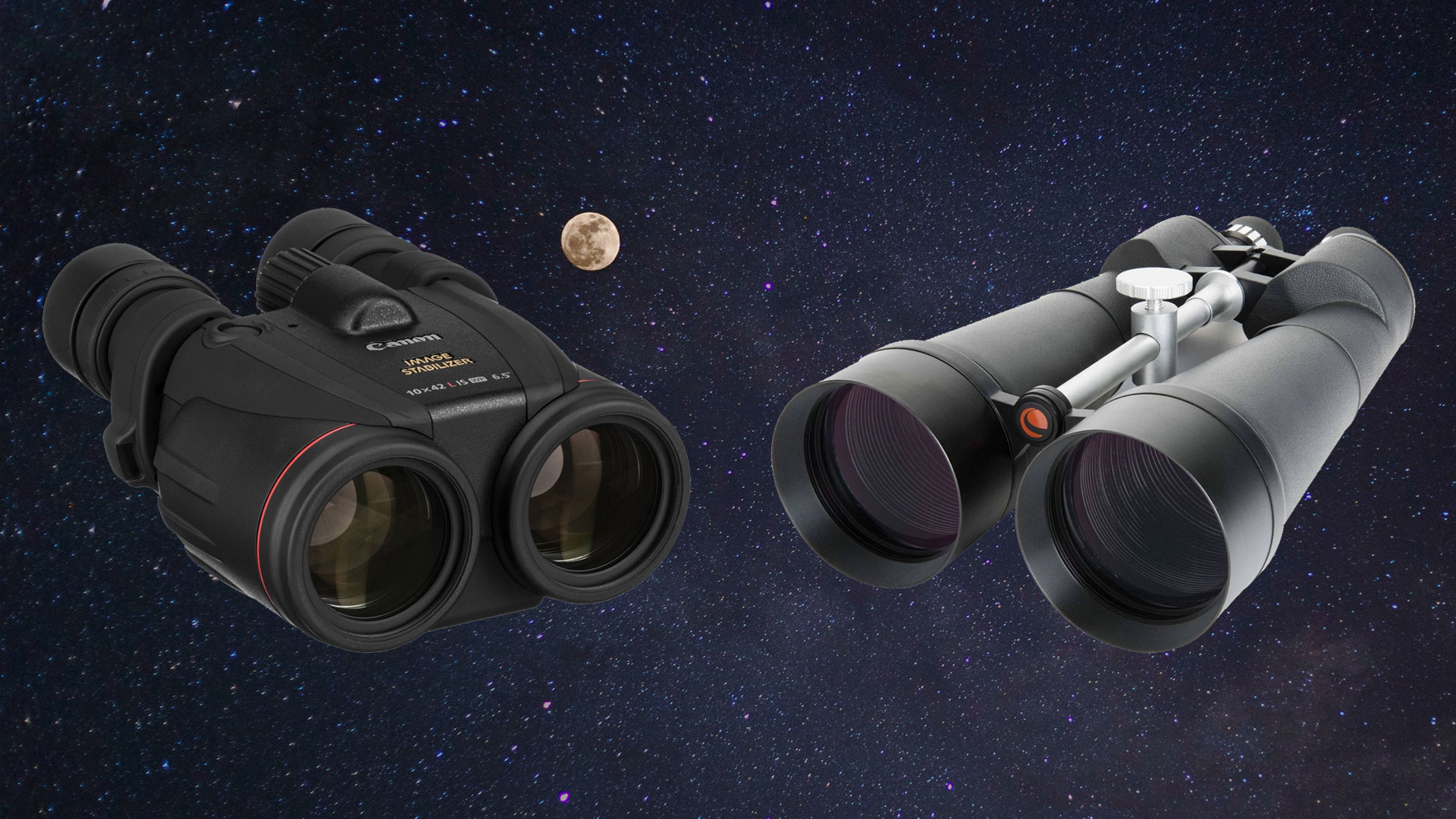
You can point any pair of binoculars at the stars. You really can. It's an easy and quick way to get to know the night sky, but a pair of dedicated binoculars, such as the Celestron SkyMaster 25x100 or Canon 18x50 IS AW, represent the next step.
What differentiates the best binoculars for stargazing from, for instance, the best birdwatching binoculars is primarily the magnification and objective lens size. The sweet spot for stargazing binocular is a pair rated at around 10x50 for adults (that's 10x magnification and a 50mm diameter objective lens to let lots of light in) and about 8x42 for children, but both the Celestron SkyMaster 25x100 and Canon 18x50 IS AW go somewhat further.
In essence, the Canon 18x50 IS AW binoculars increase the magnification and add some expensive image stabilisation (IS) technology, while the Celestron SkyMasters vastly increase both the magnification and the objective lens size to the extent that you could almost think of them as two side-by-side telescopes (for a more in-depth explainer of the differences between the two, head to our binoculars vs telescopes for stargazing explainer).
If you're after an excellent pair of binos for astronomy from home then the Celestron SkyMaster 25x100 should be on your shortlist, but there are some downsides. They're heavy and demand a tripod. That's not true of the Canon 18x50 IS AW binoculars, which are smaller, easy to travel with and feature that IS system powerful enough to get rid of shake and make the stars stand still... although they do come with a significantly higher price tag.
If you're ready to move on from a 10x50 binocular, either the Celestron SkyMaster 25x100 or Canon 18x50 IS AW would make an excellent choice. This article will dig into the differences between the two to help you decide whether the pricier binos are worth the investment.
There are a couple more options we'd like to throw into the mix before you make your purchasing decision, too. Head to our Celestron Skymaster Pro 20x80 binoculars review and Vixen SG 2.1x42 super-wide binocular review for a closer look at two more outstanding astronomy focused binos. Looking for more tips to get started? Here's how to choose and use binoculars for stargazing.
Celestron SkyMaster 25x100 vs Canon 18x50 IS AW: design and features
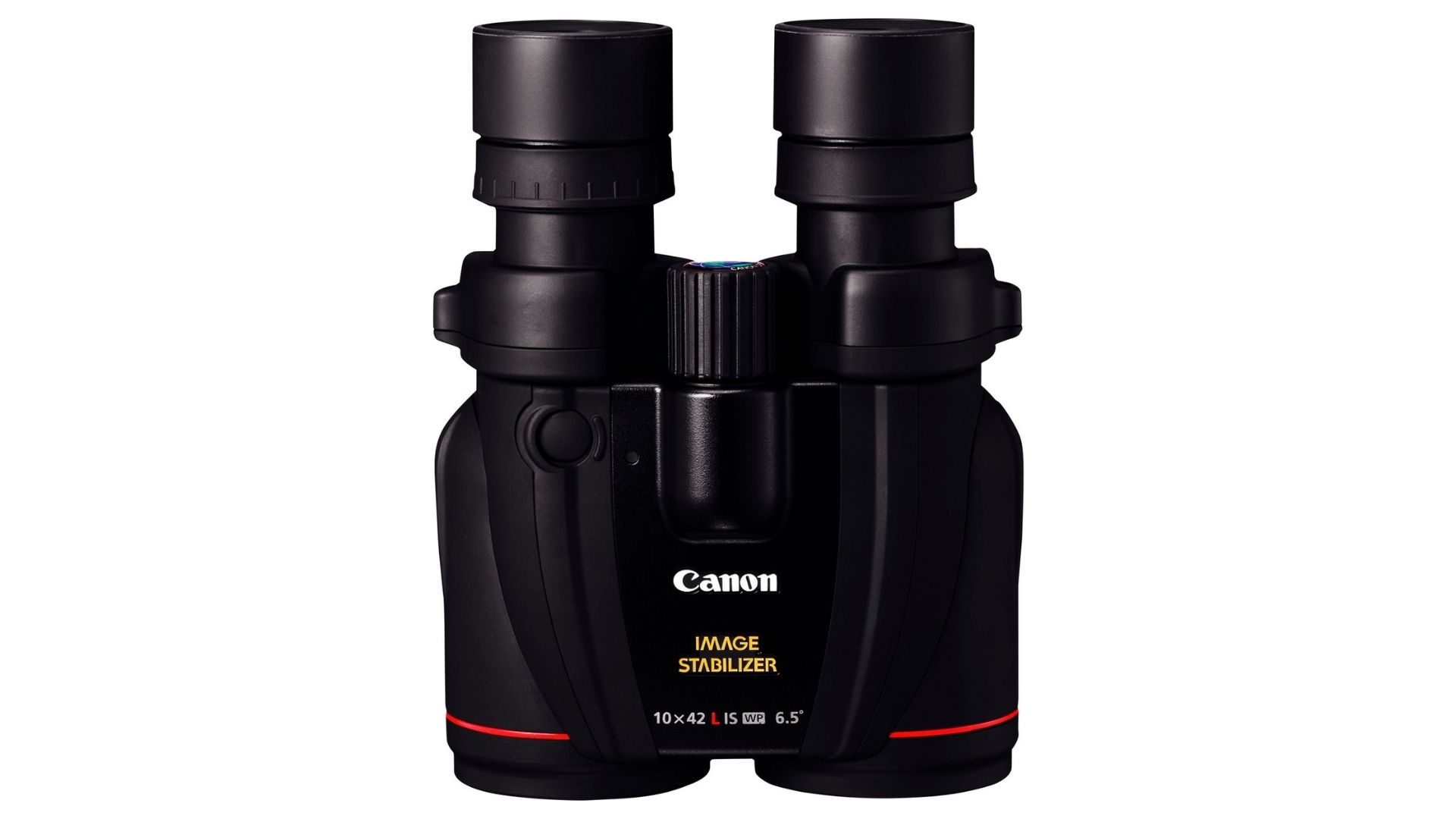
Both of these binoculars are heavyweights in more ways than one. At just shy of 140oz/4kg the Celestron SkyMasters are among the heaviest binoculars it's possible to buy. They boast incredible 25x magnification, which means you can see a 156 ft./52m field of view from 1,000m, and a very large aperture at 100mm. A downside is that they're very night-centric; an object has to be at least 80ft./24.4m away to even come into focus. Design-wise the Celestrons are well constructed, with a metal bar in the centre to add stability to the large structure.
What they lack is a rubber coating or waterproofing, both of which feature on the Canon 18x50 IS AW. Reasonably high power binoculars with 18x magnification, they produce a 213 ft./65m field of view from 1,000m, and though their aperture isn't a patch on the SkyMasters, 50mm will be plenty for most uses. They can focus on an object from 20ft/6m away so they're also better as general use binoculars.
Winner: Canon's 18x50 IS AW binoculars win out here because of their more compact and waterproof design that makes them ready for anything.
- Decided you need a telescope after all? Here are the best telescopes for stargazing
- ... and some tips on how to choose your first telescope
- Browse the best night vision binoculars and goggles instead
Celestron SkyMaster 25x100 vs Canon 18x50 IS AW: usability
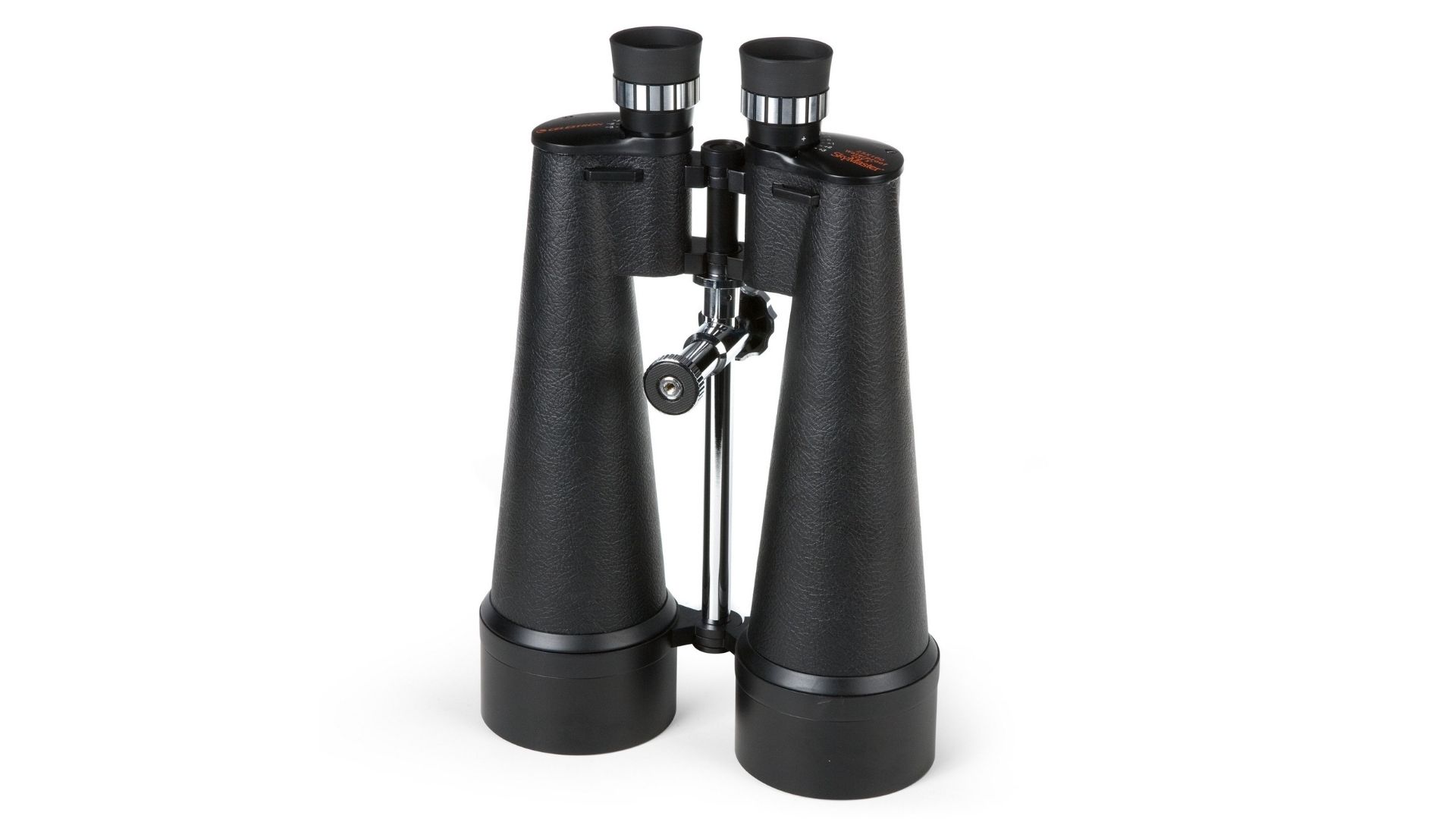
The Celestron SkyMasters are almost impossible to hold still, so require a tripod. Unlike most binoculars, the Celestron SkyMaster 25x100 you get a built-in tripod adapter that slides and attaches to any photographic tripod. That makes them best used at home in your garden or in dark sky destinations you drive to. Reviews report astounding results from the Celestron SkyMaster 25x100, though the included case is criticised as disappointingly thin, and the lens caps fall off too easily.
The Canon 18x50 IS AW binoculars are light enough for you to take on a night walk. The vari-angle prism IS system works beautifully; you just touch a button and gyro motion sensors detect the amount of shake, adjust for them using actuators around the lenses, then cancel out that shake to an angle of 0.7°. The results are exquisite, though if you're shaking a lot the image can seem a bit blurry. To fix that just lean against something (or sit down), bring your elbows in, and hold the binoculars by the eyecups to let your head take the weight. Reviewers report shake-free images and ultra-detailed views of the moon, but slightly uncomfortable eyecups. They're also drop-dead incredible for getting a super-steady close-up of the moon, and even of an eclipsed sun during the brief totality phase of a total solar eclipse (though you must avert them before the sun emerges because pointing any binoculars at the sun can immediately cause eye damage).
They may be a fraction of the weight of the Celestrons, but the Canons are still relatively heavy at 1.18kg, so it's great to see that they also have a 1/4-inch tripod thread built into their undercarriage for mounting on a tripod. That's handy for when your arms tire.
Winner: Canon 18x50 IS AW because the clever IS system and tripod thread make them more versatile, though both products give truly magnificent views.
Celestron SkyMaster 25x100 vs Canon 18x50 IS AW: price and extras
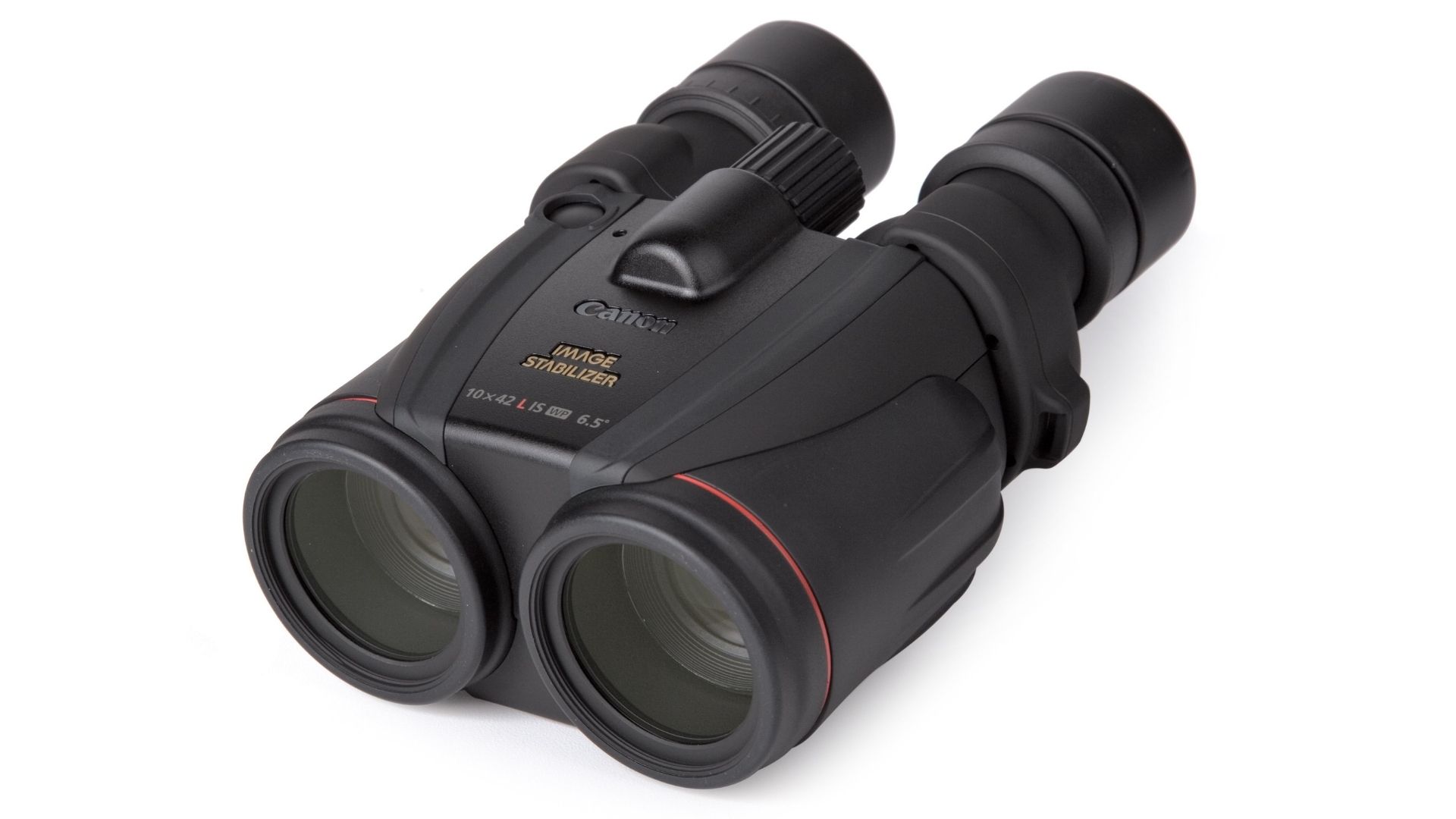
These binoculars are significantly different in price as well as specifications, with the Celestron SkyMaster 25x100 costing US$360/UK£300/AUS$800 (with a limited lifetime warranty) and the Canon 18x50 IS AW (with a two-year manufacturer's guarantee) around US$1,499/UK£1,630/AUS$2,000. Surprised? What you're paying for on the latter is that novel IS system.
When it comes to accessories, both include lens caps, eyepiece caps/a rain guard, a neck strap and a soft case, but both have their specific accessories you'll have to add. Using the Celestron SkyMaster 25x100 properly demands a study photographic tripod while with the Canon 18x50 IS AW you'll have to carry a stash of spare AAA batteries.
Winner: Celestron's SkyMaster 25x100 binoculars edge victory here purely on price, with their incredible close-ups – albeit with a need for a tripod – coming at a fraction of the cost.
Celestron SkyMaster 25x100 vs Canon 18x50 IS AW: Which should I buy?
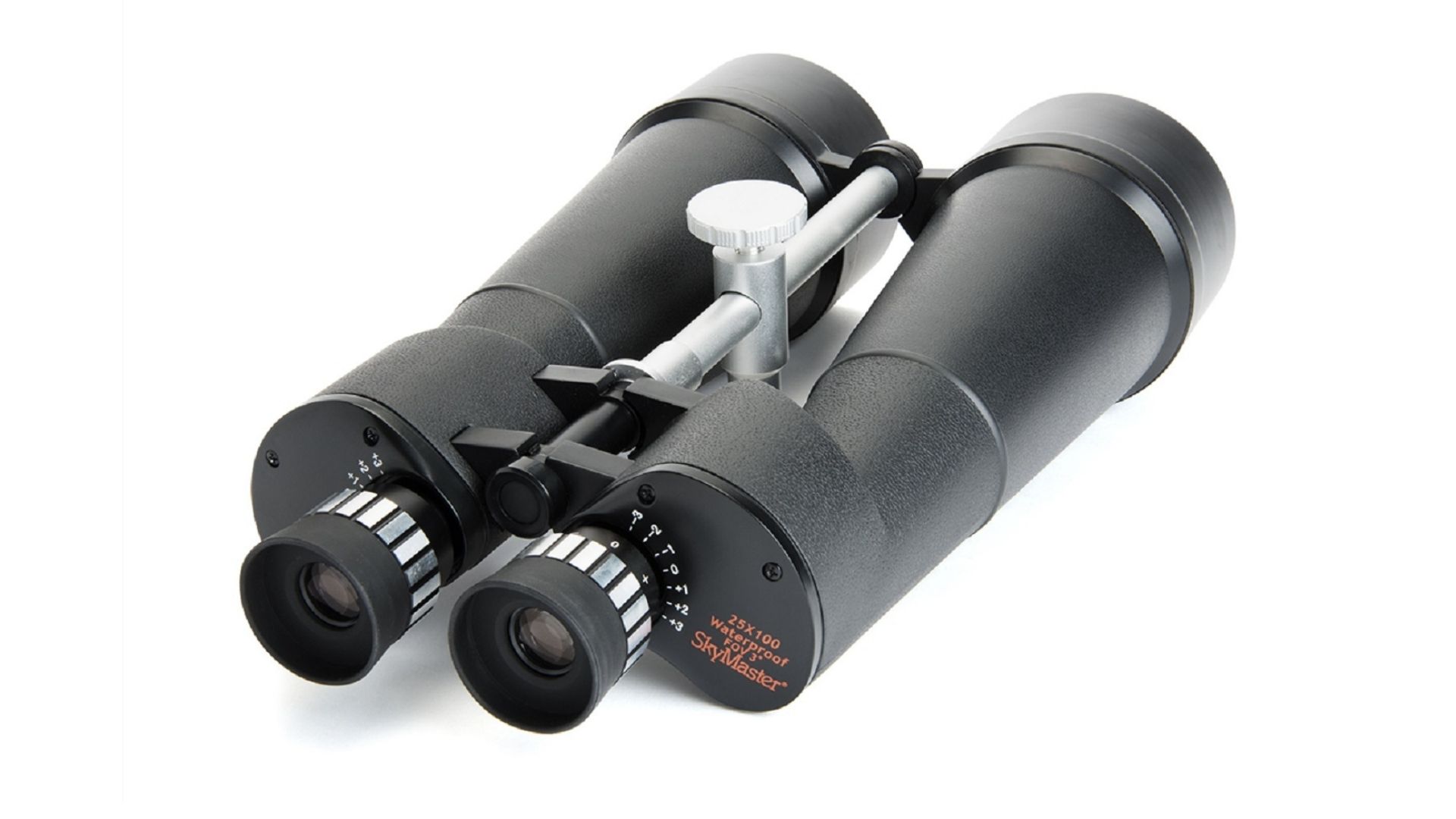
Although both of these binoculars are capable of some seriously impressive results they both feature narrow fields of view so demand some knowledge of the night sky if you're to successfully find objects. They're also both aimed at slightly different scenarios.
Being heavy, and demanding a tripod, the Celestrons are best thought of as ideal for a backyard stargazer after a specialist set-up, or at least someone prepared to carry significant gear to a dark sky site. With less bulk and an incredible IS system, the Canons are ideal for handheld astronomy and for all kinds of astro-travel.
Get all the latest news, reviews, deals and buying guides on gorgeous tech, home and active products from the T3 experts
Jamie is a freelance journalist, copywriter and author with 20 years' experience. He's written journalism for over 50 publications and websites and, when he's not writing, spending most of his time travelling – putting the latest travel tech through its paces.
